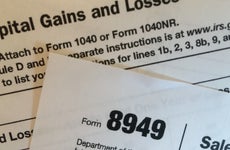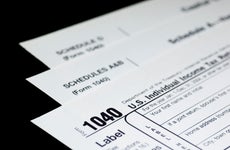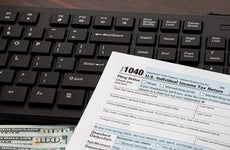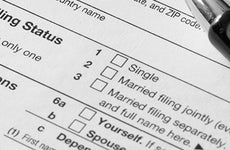Tax guidance and resources
Looking for advice on lowering your federal or state taxes? You’ve come to the right place. Plus, get news and advice related to tax brackets, property taxes, estate taxes and more.
Taxes Basics
Editor's Picks
Latest Articles
-

How to calculate taxes on an inherited annuity
Here are key things to know about inherited annuities and how to calculate taxes.
3 min read May 30, 2024 -

Is credit card interest tax-deductible?
Interest paid on outstanding student loan debt, mortgage and home equity loan debt, business expenses, and interest on money borrowed to purchase investment property qualifies for a deduction.
3 min read Apr 04, 2024 -

Need to report cryptocurrency on your taxes? Here’s how to use Form 8949 to do it
Here’s what to know about declaring your capital gains and losses when using Form 8949.
6 min read Mar 27, 2024 -

Cryptocurrency taxes: A guide to tax rules for Bitcoin, Ethereum and more
The IRS is stepping up enforcement on potential tax evasion by looking more closely at who’s exchanging cryptocurrencies.
6 min read Mar 27, 2024 -

How are mutual funds taxed? 4 ways to minimize your tax bill
Mutual fund taxes can be complicated. Here’s what you need to know.
3 min read Mar 27, 2024 -

Donor-advised funds: A popular tax-advantaged way to give to charity
Here’s how a donor-advised fund works and why it may be an attractive option for the wealthy.
5 min read Mar 29, 2024 -

NFT tax guide: 6 top tips for non-fungible token creators and investors
Here are six things that those involved in creating and trading NFTs need to know.
5 min read Mar 26, 2024 -

Wash-sale rule: What to avoid when selling your losing investments
Here’s what a wash sale is and how to easily avoid it while securing your tax write-off.
6 min read Mar 22, 2024 -

7 top tax tips for investors
Pay particular attention to these areas and you may find some new ways to save on what you owe.
5 min read Mar 29, 2024 -

Capital gains tax on real estate and selling your home
Real estate sales may be subject to capital gains taxes. Here’s how to keep as much profit in your pocket as possible.
8 min read Mar 18, 2024 -

Everything to know about financial insolvency
Insolvency is a difficult financial situation, but it doesn’t have to last forever.
6 min read Jun 26, 2024 -

What is the long-term capital gains tax?
Certain windfalls are considered capital gains. Here’s how to determine what you’ll owe.
9 min read Mar 13, 2024 -

Personal loans: Are they taxable income?
What to know about the tax impacts of personal loans
4 min read Feb 29, 2024 -

What is the net investment income tax and who has to pay it?
Here’s how this tax works and some strategies to minimize the potential hit.
3 min read Feb 08, 2024 -

2024 gift tax rate: What it is, how it works and who has to pay it
The gift tax imposes a tax on large gifts, preventing large transfers of wealth without any tax implications.
4 min read Feb 08, 2024 -

What is the kiddie tax and how does it work?
Here’s what you need to know about the kiddie tax, how it works and who pays it.
3 min read Feb 05, 2024 -

TurboTax review 2024 (tax year 2023)
TurboTax offers comprehensive tax filing support for a slightly higher price.
4 min read Dec 01, 2023 -

H&R Block review 2024 (tax year 2023)
H&R Block is the best bet for those who qualify for the free edition and want the convenience of multiple filing options.
3 min read Dec 01, 2023 -

Reduce your taxes with these last-minute moves before the end of the year
Take heed, taxpayers. Time is running out on these moves.
5 min read Nov 30, 2023 -

2023-2024 tax brackets and federal income tax rates
Preparing for the 2023 tax season and unsure about your tax bracket? Bankrate can help.
4 min read Nov 13, 2023
Related Topics
Helpful Links
- States with no income tax
- Tips to prepare for filing season
- Tax credit vs. deduction
- Deduct child care expenses
- Use the sales tax deduction
- Claim medical expenses
- Tax deduction for charitable giving
- How to e-file taxes
- How long to get your tax return
- How to invest tax return
- Open IRA to save on taxes
- When to pay estimated taxes
- How bonuses are taxed
- Long-term capital gains tax
- Tips for paying estimated taxes
- When are taxes due?
- Do I have to file taxes?
- The best tax software




